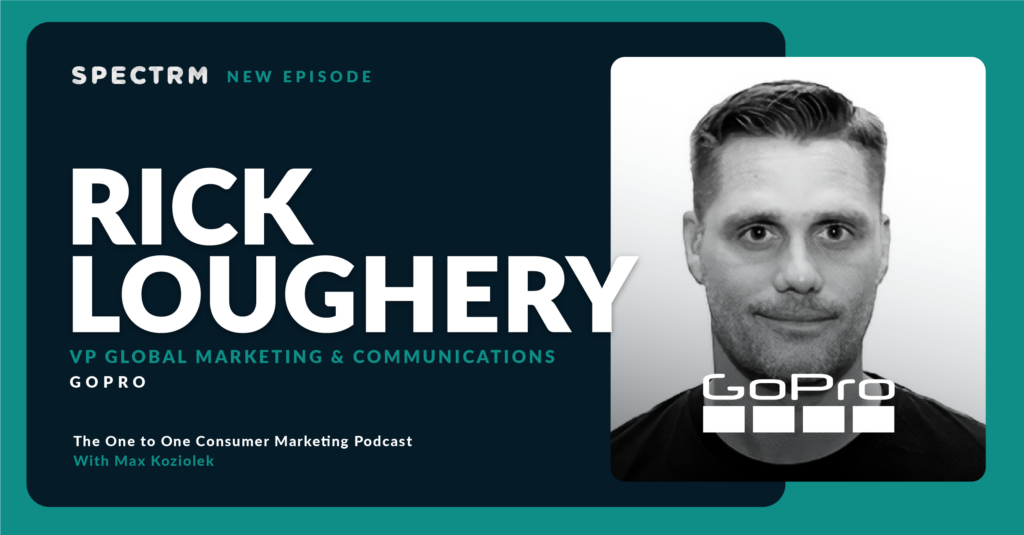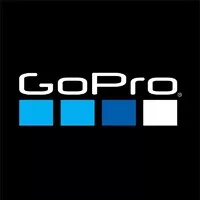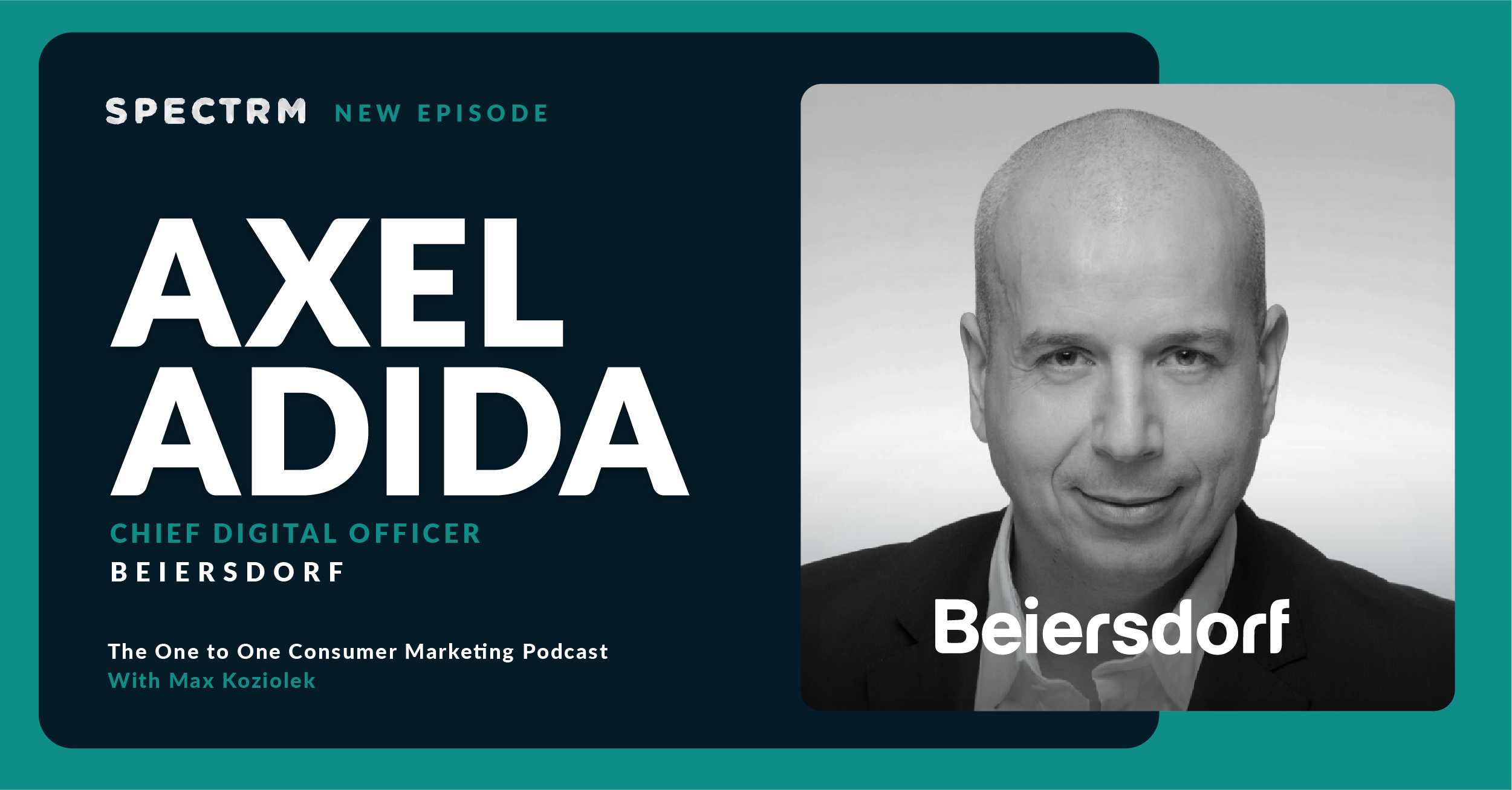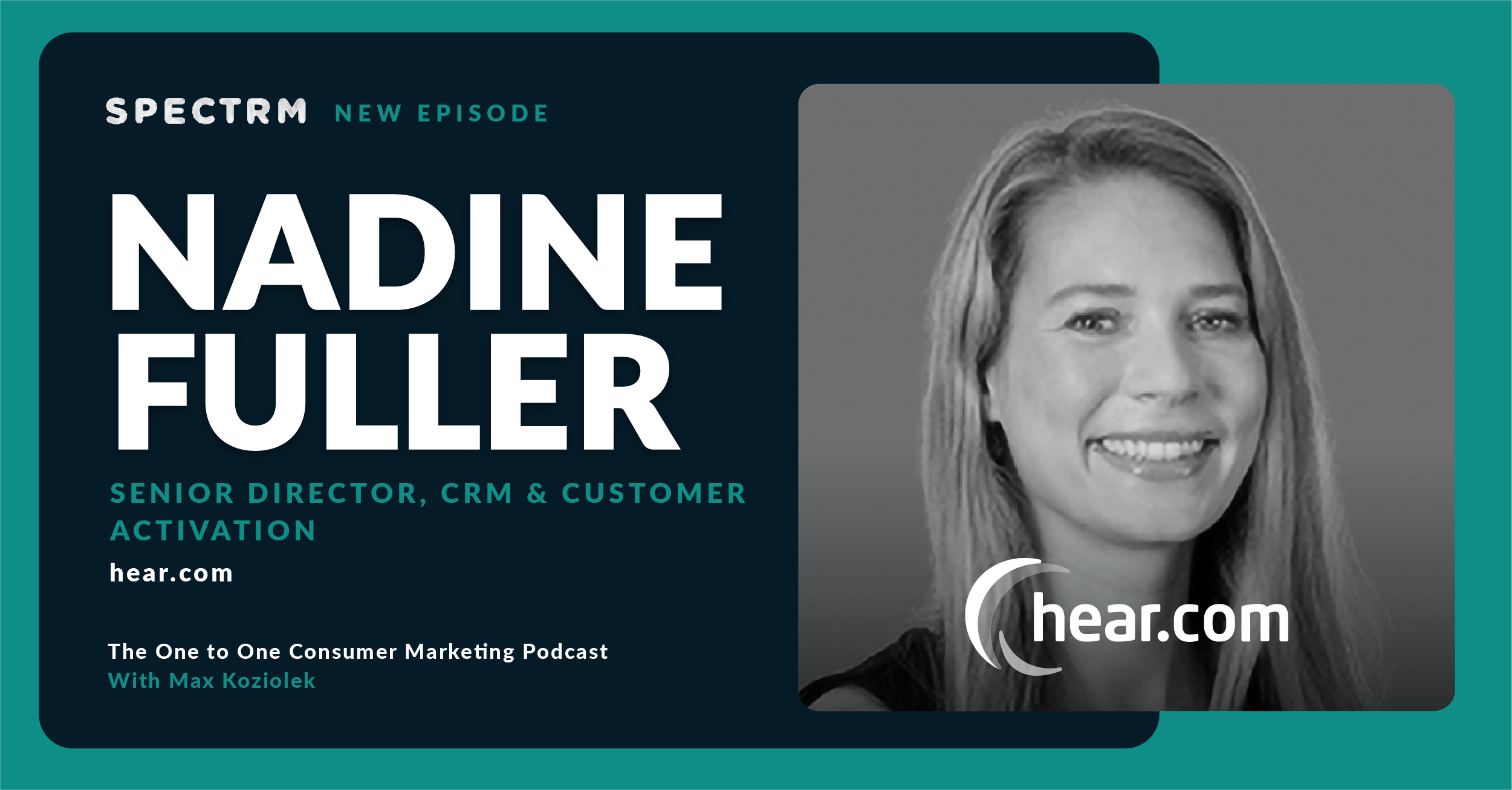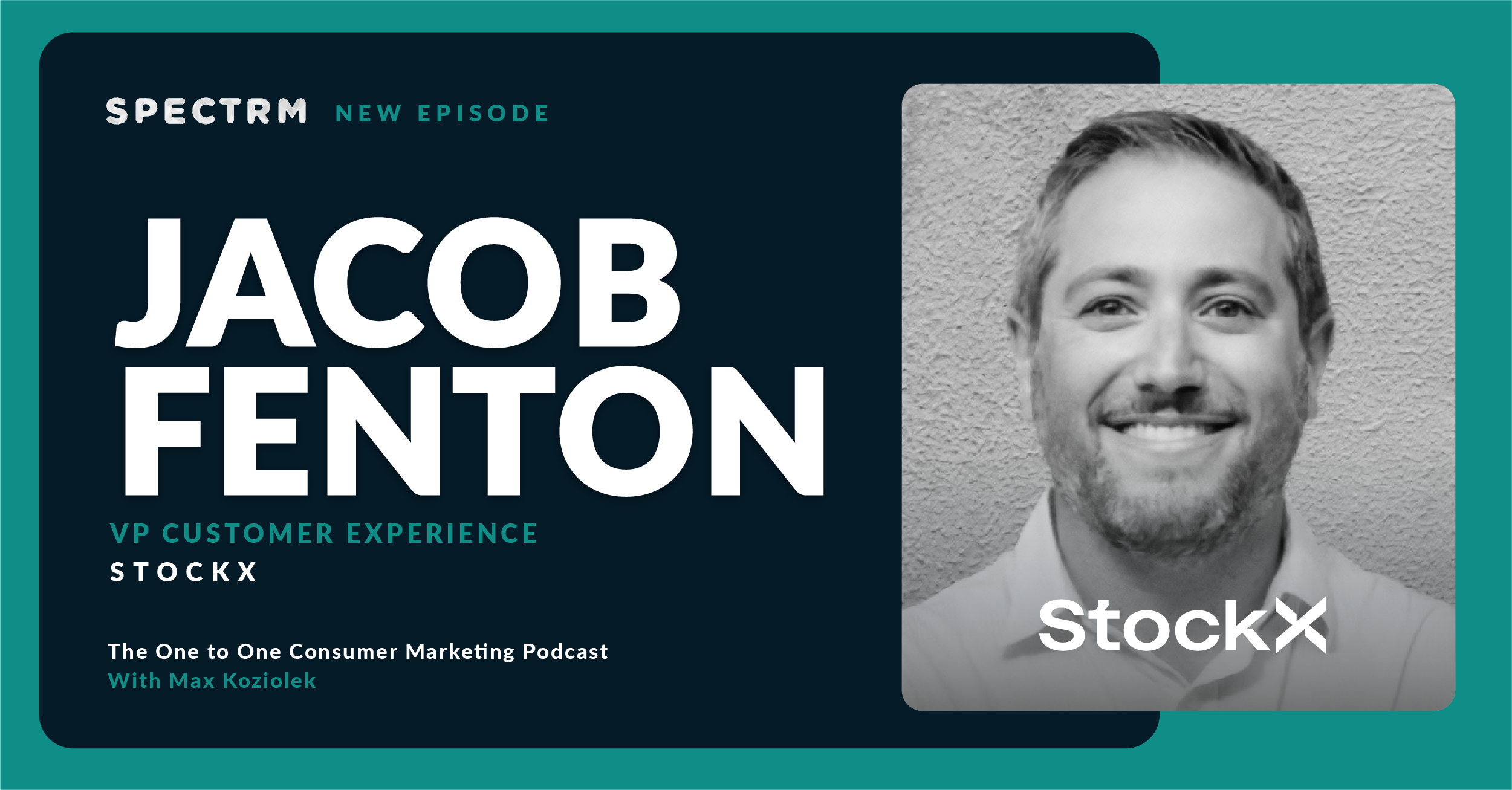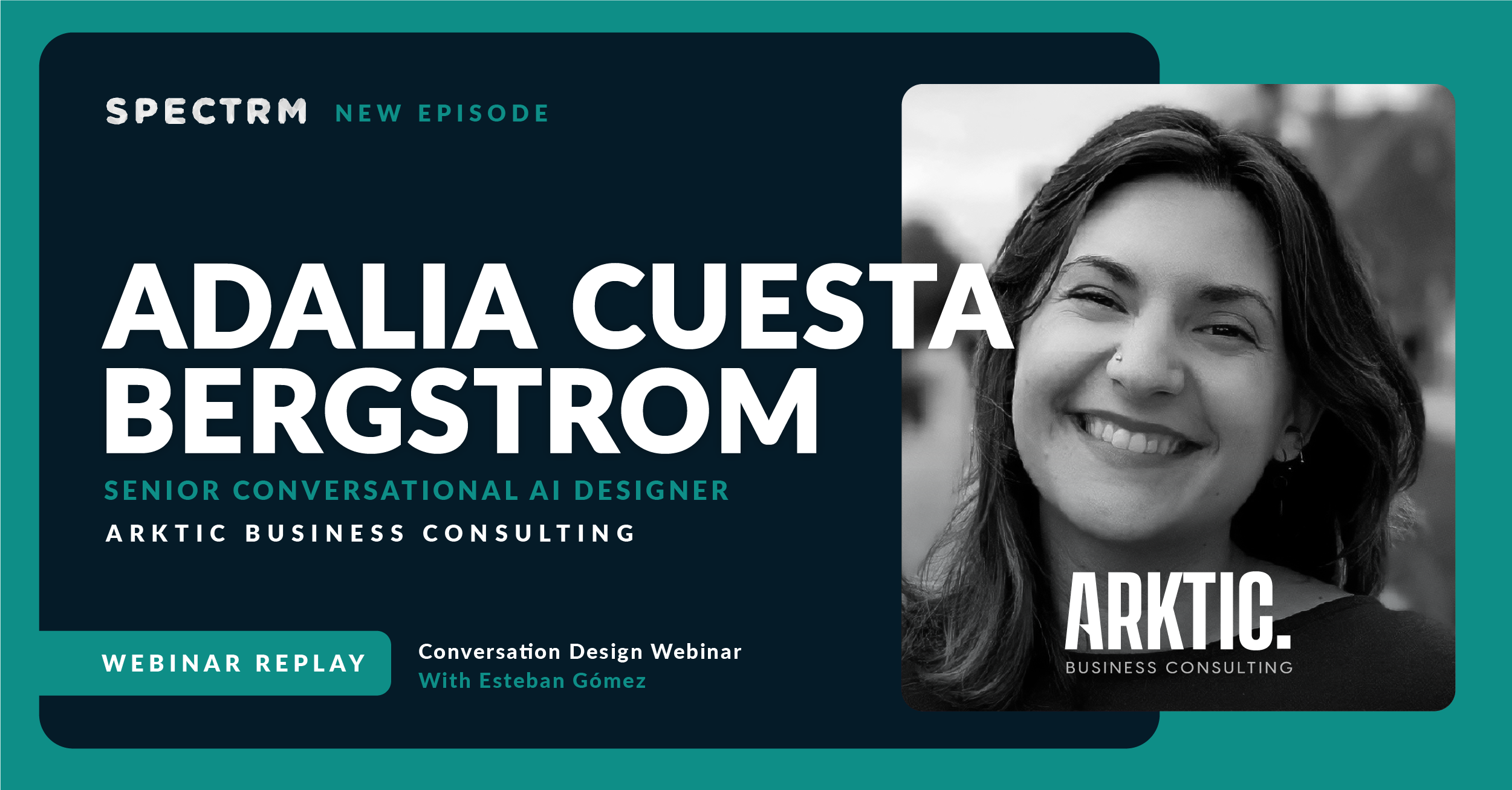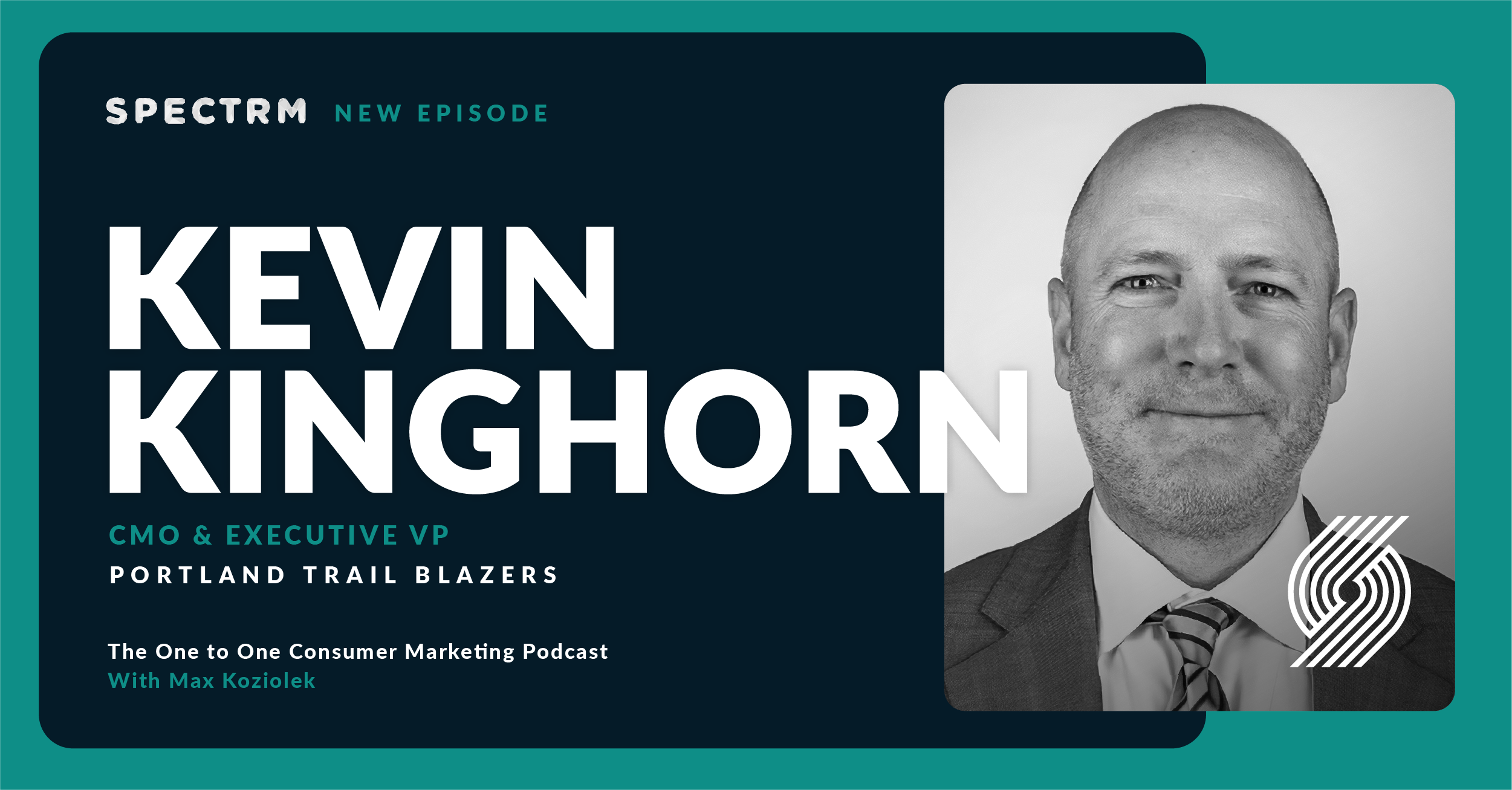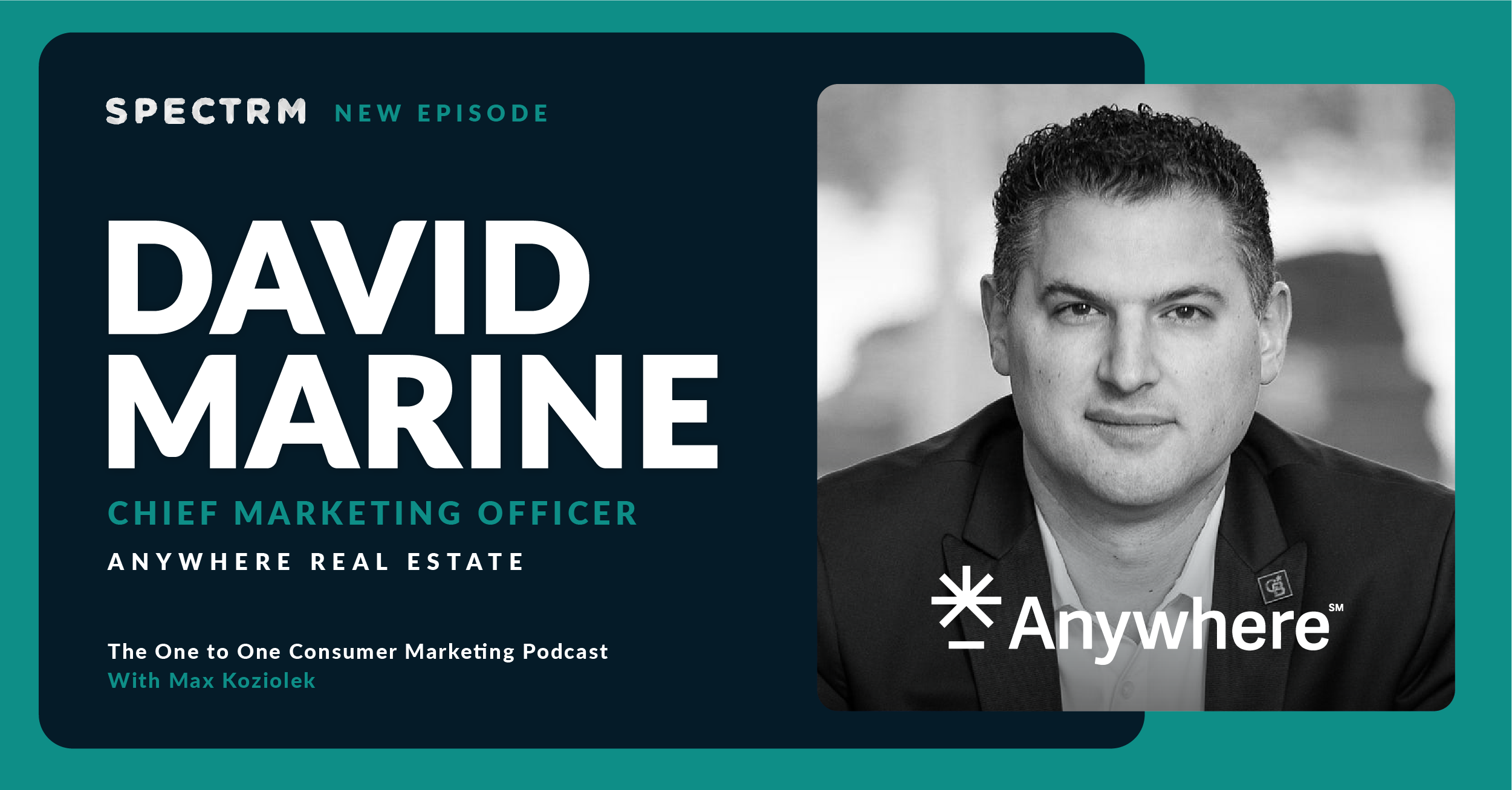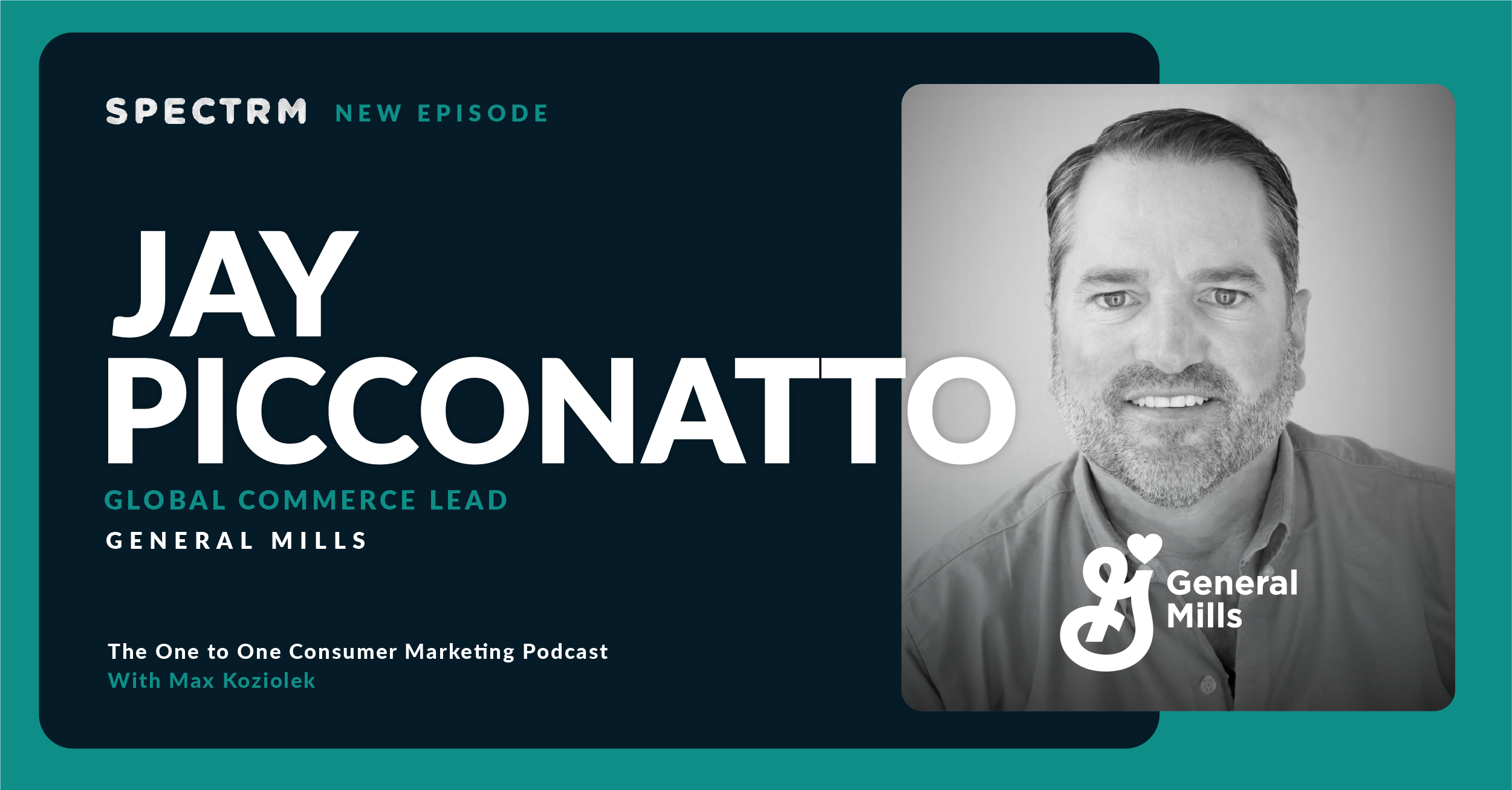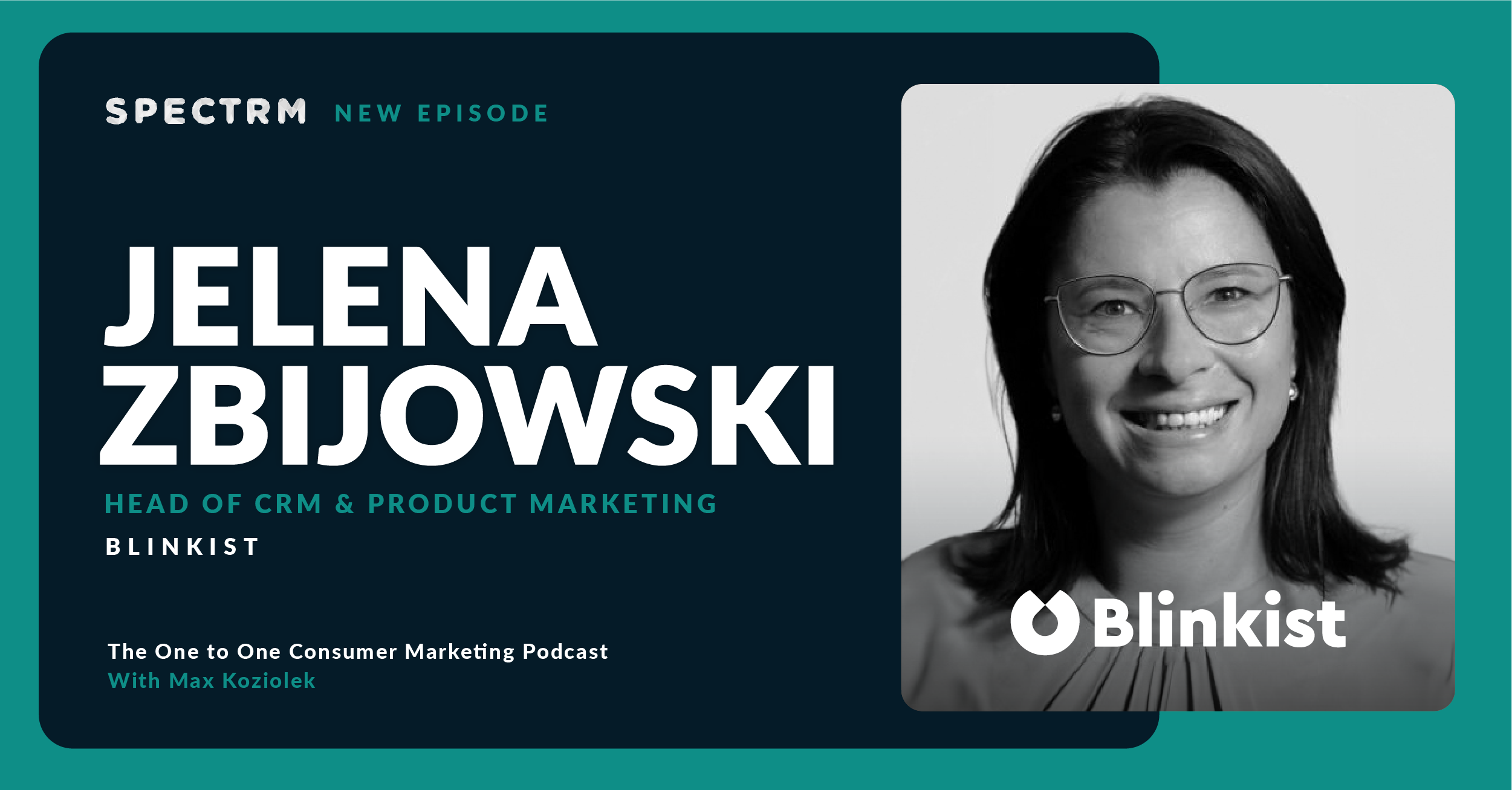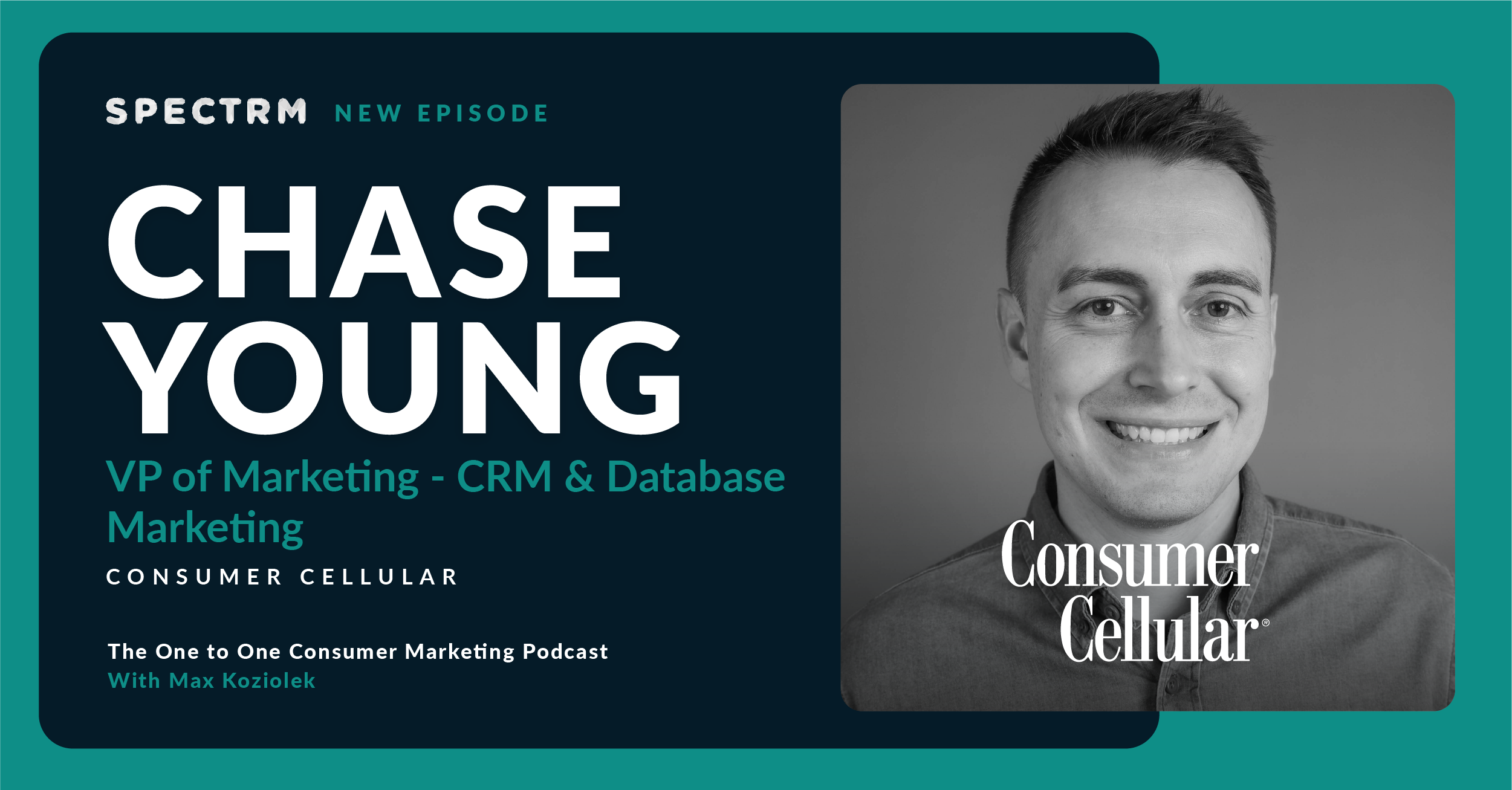Summary
Max speaks with Rick Loughery, VP Global Marketing & Communications at GoPro. They discuss how GoPro identifies customer niches and speaks authentically to them, how they support their influencers, and why they’re “on the ground” with customers to learn more from them. They also talk about the strategies GoPro uses for retention, the importance of knowing how to show up on platforms, and what the future looks like with “more informed data.”
Topics discussed
- GoPro’s strategy of identifying niches and talking authentically to them, and then evolving that outreach as consumer marketing trends change.
- Why true engagement means going where your customers are and interacting with them “on the ground.”
- The approaches GoPro takes to retention through providing video editing tools, motivational content, and rewards.
- The importance of knowing how to show up on platforms for engagement, not just post content.
- How personalization centers around being able to speak authentically to specific audiences.
- Advice for marketers today, including the importance of staying agile and having fun.
- Why the future of consumer marketing will be built on “more informed data.”
Having that relationship with the customer, having that content, sending it out to them through CRM, whether that's through email, whether that's through text, or whether that's an app notification — that's an important process.
Guest biography
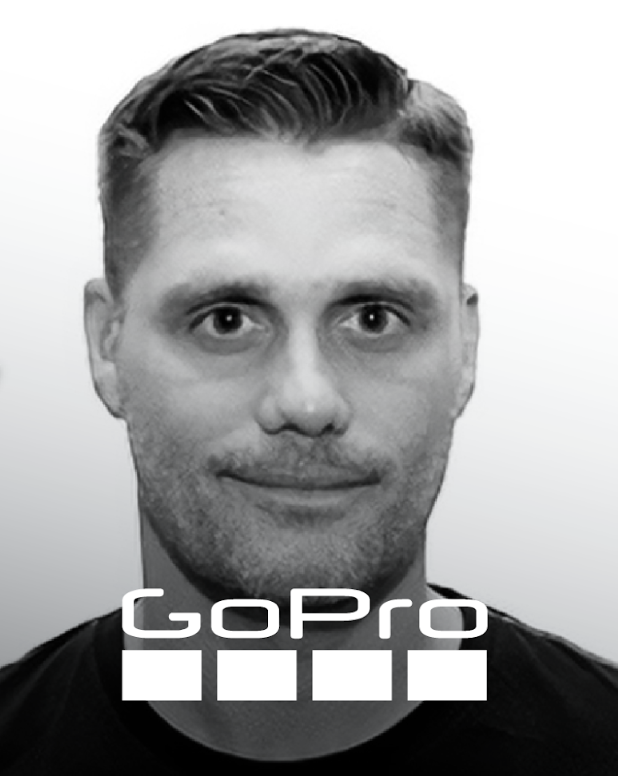
- Rick has served as GoPro’s Vice President of Global Marketing and Communications since January 2019 and is now overseeing GoPro’s Brand Marketing, Lifestyle Marketing, and Product Marketing initiatives. Rick was Vice President of Global Communications in April 2017, served as Senior Director of Global Communications from December, 2014 to April 2017. He started working with GoPro at the end of 2009 and joined full time as the 13th employee in early 2010.
Company overview
GoPro helps the world to capture and share itself in immersive and exciting ways. Founded in 2002 by Nick Woodman, a photo and video enthusiast in search of a better way to film himself and his friends surfing, GoPro has grown into a relentlessly innovative brand loved around the world for its insanely versatile and enabling products.
Industry: Computers and Electronics Manufacturing | https://gopro.com/en/us/
Subscribe to the podcast newsletter
Transcript
00:00
Rick Loughery
GoPro has always done a really good job of identifying the niches, the ways in which our product is being used. And we’ve always done a good job in talking to those audiences and understanding the difference between a skier and a snowboarder and a skier who know big mountain skiing and the skier who skis in the park. So we’ve always done a good job in trying to be authentic and talking to that audience.
00:33
Max Koziolek
Hey, everyone, and thanks for listening to the one to one consumer marketing podcast. Today I’m speaking with Rick Loughery, VP Global marketing and communications at GoPro. Thanks for chatting with me today.
00:45
Rick Loughery
Yeah, how are you doing?
00:46
Max Koziolek
Very good. I need to get started. You have an incredible journey, right from working with Silicon Valley tech companies to now your role at GoPro. And you are employee number 13. So tell me a little bit more about this incredible run.
01:04
Rick Loughery
Yeah. Well, I moved out to Silicon Valley from the east coast in 1996. And I moved out because two things. One, I loved to surf and I wanted to get back to California. I’m not a good surfer, but it was something that I was passionate about. So that was a driving force. And then at that time, way back in 1996, the whole Web 10 netscape had just gone public. The World Wide Web was this fascinating thing to me, and what better place to go than to San Francisco Valley? So I ended up there in 1996, worked my way through different tech jobs and at different startups, eventually started my own communications agency with a partner, and we grew it to a decent little size. And then were acquired by a bigger agency that was based out of Chicago.
01:59
Rick Loughery
They were a pr agency record for Miller, for Wrigley’s truly gum. And they wanted to sliphold in tech. And that was a really cool thing that got to experience, and it was a great win. And during that time, I met lots of different startups. I actually was introduced to the founders of Fitbit, and we actually helped launch Fitbit way back when. And around that same exact time, I was introduced to Nick Woodman, the founder of GoPro. And a friend of mine said, hey, do you know who GoPro is? And I did because I was a surfer, mountain biker, snowboarder, and I was familiar with their cameras. And I had one of their cameras, and this was in 2009.
02:41
Rick Loughery
So I started off with Nick as a client, but I knew that I wanted to move my family from the Bay Area down to San Diego, where that’s where I’m right now. And so super interested in the job. But I actually turned it down at first because I wanted to raise my family down here. And Nick, in talking with Nick, he was like, you know what? He’s like, come work with me. Stay with me for a year up here. This was Hasbro Bay, which is just outside of San Francisco. And he said, stay with me for a year. I’ve got another guy who’s based down there. Action sports is, like, headquartered down there, so it makes sense to have an office, but just stay with me for a year. I did, and the year came up. I said, nick, can I move?
03:28
Rick Loughery
I really want to move down. Want to raise my family down there. He kept his word. It was a handshake. Went. Moved down there, and we started a little office and started growing. And so I had him as a client and then went over full time because it was an opportunity for me to still stay in tech because it was a technology product, but also to follow my passions, the stuff that I love to do, skiing, snowboarding, surfing, mountain biking. So it was an opportunity to blend the two worlds together. And I was very blessed and fortunate to have that opportunity. And when I started, there was no stock. We didn’t even have healthcare. My wife worked for a big healthcare company up in the Bay Area, so we knew we had two kids and one on the way.
04:13
Rick Loughery
And we’re like, she got a really good health care plan, so we can take this risk. We can take this bet. And it was a handshake between Nick and I, and he was like, trust me, this will work out. And 13 years, 14 years later, it definitely worked out.
04:27
Max Koziolek
It definitely worked out. Yeah. I mean, it’s a crazy journey, right? So from a very small team to a gigantic public company, how often did your role change?
04:41
Rick Loughery
Yeah, it’s been a roller coaster ride. We were up, were down, and now we’re heading back up again. And we’ve got great team on board here with me on the marketing side and definitely, really looking forward to the upcoming year.
04:57
Max Koziolek
Yeah, sounds amazing. Thinking about GoPro is an incredible brand. Right? So it’s not about only the tech product, but it’s also the brand that you and the team have built over years. I think it’s a remarkable success, I think, globally, on how to build brands around much more than a product. But how do we see the marketing, the consumer marketing world today?
05:21
Rick Loughery
Fragmented and challenging. It’s harder and harder to reach the customers. So it takes a lot of planning, but it also takes a lot of agility to being able to pivot. We saw that with COVID and then even along the way, hearing me, the last couple of years and identifying what’s working, identifying what’s not working. And like I said, pivoting from there. But I think one of the challenges is if I look at when I first started back at GoPro, even from a media landscape, it was a lot easier to reach the audience and the customer. GoPro has always done a really good job of identifying the niches, the ways in which our product is being used.
06:03
Rick Loughery
And we’ve always done a good job in talking to those audiences and understanding the difference between a skier and a snowboarder and a skier who skis big mountain skiing and the skier who skis in the park. So we’ve always done a good job in trying to be authentic and talking to that audience. And twelve years ago, it was actually easier to talk to those audience because your media wasn’t as fragmented the way it was. And we did a really good job with owning the verticals as we said it, and then providing error cover through the advertising we did more broadly through linear tv. That stuff is short changed. So now it’s like continuing to identify and talk to those niches and be authentic in talking to them. But what are the ways in which you’re reaching them?
06:53
Rick Loughery
And that has definitely evolved and it is always a work in progress.
07:01
Max Koziolek
Do you mind sharing what’s currently working for you here and how to reach your audience and how also to get the feedback you’re describing, that this feedback is really important. I would love to understand how you do that, how you collect from a very specific audience feedback to get it back.
07:18
Rick Loughery
Yeah, I mean, I think for us, what we like to do is we want to be at where our customers and our target audience is at. And that goes again about the niches. Like you amass a bunch of niches and you have a mass market, right? So we need to be there through the athletes that we sponsor and outlive. They’re now athletes are media themselves and influencers, and we know are media themselves. So who are the right athletes? Who are the right influencers in these different verticals? Have them help evangelize the product to their audience? What are the events that we need to be at? And then where the brand shows up and then where we actually go up on the ground, and then that gives us an opportunity to talk and listen to customers or potential customers.
08:06
Rick Loughery
And we have a feedback loop for that internally here, for what we’re hearing. There’s obviously other things that our consumer insights, they’re doing a lot of great work that they do that feeds in this is what the customer is saying. This is what potential customers saying.
08:23
Max Koziolek
Interesting. Very interesting. Understood. When you think about customer retention, and we spoke a little bit about this before, is when I buy today a goPro, I have that. It’s a great product, but when it’s the second time, the next time I buy that, and the big question is around customer lifetime value and so on. So how do you manage customer retention and lifecycle?
08:50
Rick Loughery
Yeah, because the great thing is the camera is super durable, super rugged, super durable, super rugged camera for three or four years. And it’s an amazing piece of technology. There is definitely a group of customers that in any product that want the latest and greatest every year, but the average user, not so much. They’ve got that camera, it’s great camera for them for the next two to three years. And what you’re talking about is how do you engage with that audience and how do you keep them engaged? And for us, that is the importance of our subscription service. So you bought that camera. And one of the things that we saw early on, like six, seven years ago, was the importance of like here’s this camera has this awesome content.
09:39
Rick Loughery
How do I get it off here and share around the social and how do I make videos that look like your videos? GoPro, because that was one of the biggest things we heard, went on different trade shows and the different events we do is we would put up all these monitors and we’d show all of our GoPro videos and people were like, do you love your videos? They look amazing. I wish I could make videos act as good as what you did. That led us to go out and acquire and develop our ecosystem of editing software. So now the brand is the GoPro Quick app, and that allows you to put your content in the app, pulls it over from the GoPro, puts it in the app and creates an automatic edit for you.
10:21
Rick Loughery
We’ve been evolving that process over the years and creating new and more premium features. For example, last year we came up with auto highlight, and that is the ability to, you get hung on with your GoPro. You plug your GoPro in as it’s charging, the footage from the camera goes up to the cloud. You get a ding on your phone and your app says your edit is ready for you. You tap it, there’s an automatic edit that appears for you. You can go in and tweak it if you want to tweak it. But that auto highlight experience is part of our subscription services, part of these premium services.
11:00
Rick Loughery
So we need to continue to move forward on creating a seamless, easy experience for people to capture their content and to get it out there, whether they’re sharing it or whether just enjoying it with their family, but enable them with better experiences. And that’s, again, a lot of the stuff that we’re doing on quick. We’ve publicly talked about how we’ll now have a desktop, quick editing desktop app coming out as well. So that’s one facet of the subscription service. The other is the cloud, the auto cloud backup. So this allows you to backup all your content to the cloud. And then the third big pillar is the warranty. So in the event that you do damage your GoPro, we have no questions asked. Warranty replacement. So this is all part of our subscription service.
11:51
Rick Loughery
So that’s like, from the product side, we’ve got to continue to innovate, we’ve got to continue to provide services that keep people engaged and keep people using the camera. But there’s stuff on the marketing side and CRM side that we can do as well. Look at the customer journey and how are we interacting with them. And another thing that we hear from our customers is going back to what I was saying before is like, I love your videos. How do I make videos that look that great? Well, we’ve got this automatic editing experience, but content and really motivating people and showing people like, here’s the best ways to use your camera for skiing. Here’s the best ways to use your camera for mountain biking. Here’s some inspiration.
12:30
Rick Loughery
Having that relationship with the customer, creating that, having that content, sending it out to them through CRM, whether that’s through email, whether that’s through text, or whether that’s an app notification, that’s an important process. Our GoPro awards program excited here, but I’ll stop there. The other thing that I was going to say is, like, a part of that engagement is also rewarding our customers. And that’s our GoPro awards program. And that’s something that’s been very successful for us over the years. And it started off as simple as photo of the day. And I remember Nick whiteboarding this. Know our little office in Half Moon Bay, we had all the Grammy O’s ideas about this awards program. And then I remember this is just before Instagram. So this is just like, how about we just start off with photo of the day?
13:27
Rick Loughery
And that awards program grew from there. And now we’ve got a very successful awards program. We’ve got different things, like the million dollar challenge. We’ve got the annual GoPro Snow Challenge. We just did this one this summer get wet, get paid? That was super successful. And that is you’re rewarding your customers, your users, for the content that they’re creating. And we made it easier for them to share. So if you’re using the GoPro Quick app, you’ll notice as soon as you bring some content in, it says, hey, do you want to share this with the awards portal? Couple of taps. It’s in there. Our social media team, our studio team can see that content, identify that content, reward that content.
14:09
Max Koziolek
That’s amazing. And it’s also because your customer is producing such an amazing content, it’s much more natural for you to do that. But imagine how many brands are right now trying to leverage user generated content from other platforms. Is it Instagram or is it TikTok or something? They somehow try to work with that. And that’s something you built that already into your entire marketing strategy and your entire retention strategy.
14:38
Rick Loughery
Absolutely. There’s no doubt that we’re still out there on the social platforms. TikTok, Instagram, Facebook, YouTube, discovering amazing GoPro content and reaching out to those people to say, hey, submit to this awards. We’d really love to use it. Let’s compensate you for this awesome piece of content that we saw. So we’re definitely also out there actively looking.
15:03
Max Koziolek
You are sofa yourself use that. And I can see that also from background. If you look at the customer lifecycle, do you see already an effect that when people start to get older, then they start to use it less and then you have to acquire younger folks always for GoPro, or is there no effect on that?
15:22
Rick Loughery
Yes and no. So yes, almost any type of consumer product, you’re wanting to get your younger users, even if your products were older people, you want those people that are moving up. So there’s always this conscious effort to discover and nurture that younger customer. For us, again, that’s about the athletes that we’re supporting, the influencers that we’re supporting being on the social platforms. We’ve got a fantastic social media team, small but mighty team. They’re super young and they understand the platforms, they understand what works on the platforms, and they understand the importance of engagement is not just about the content you post, but also how you show up on the platform. We’ve had a couple of great examples where we’ve commented on some different posts and we’ve had 100,000 likes just on our comment.
16:16
Rick Loughery
And just because they’re in tune with that platform, they’re in tune with what’s going on. So that’s been the key thing for us as well.
16:24
Max Koziolek
And it’s so nice to have a brand like that. Or if you have a brand like that, you can also work with that because people associate so many things with you. And when you comment on something, they have a background why you’re saying this like that and why it’s funny compared to other brands which have no chance of doing that.
16:42
Rick Loughery
Yeah, there was one that we did with the doors versus wheels, if you remember that kind of big debate that was going on TikTok about a year and a half ago, there was one that blew up like that. There was one where this random teacher said, hey, if any pro team comments on this post, I’ll let my kids skip their final tomorrow. And we posted, we let co in our names that count. And it went up. So it’s like stuff like that. And again, that’s about having a team that understands the platform, that lives in that platform. But to get back to your question, as far as the audience, like I was saying before, we masked a bunch of niches to make a mass market. And similarly, there is all different ages within those different verticals.
17:27
Rick Loughery
So when you look at our demographics, they’re kind of evenly sliced around the three different age groups. So again, it’s a great problem to have, but it’s also a challenge talking to all of them.
17:42
Max Koziolek
That’s a perfect segue into my next question. How do you see personalization on this to talk to all these kind of different verticals, to different sports? You mentioned there’s a huge difference between someone snowballing or skiing. So that means your communication needs to be personalized. Of course, maybe the usage of the camera is completely different. How do you manage all these different niches and segments and so on?
18:11
Rick Loughery
Well, the most important thing is to have, what we’ve done over the years is to have people who are passionate about these different niches and these different verticals so they can help guide marketing. Part of a lot of room are in marketing and how to authentically speak to these audiences. It’s probably different than what you’re talking about, than personalization. But on a broader scale, I’m kind of going back to there’s a difference in talking to a skier than talking to a snowboarder. And so understanding that and the communication and your marketing methods is know the GoPro was founded from Nick’s passion to go out there and capture him and his friends surfing and then grew from there. And then he was very passionate about motorsports.
18:57
Rick Loughery
And once he started doing better at GoPro he was able to take motor racing classes, four wheel racing classes. He straps his wrist, GoPro onto the roll bar mount, and everyone in his class is like, where’d you get that? He’s like, I make those. The point being is it was his passion in these sports that helped him develop the product and also helped him speak the language. And he grew the company that way with people who were enthusiasts. And we had, like, whether it’s in engineering, whether it’s in product, whether it’s in marketing, we have these enthusiasts and they all contribute to that and being able to speak the language and also understand what the product needs to do for that customer.
19:39
Max Koziolek
As a leader at GoPro, with all those different niches, when you were hiring for your teams, were you looking also that people are embedded into the sports? Was that something that you look for in hiring conversations as well?
19:53
Rick Loughery
Absolutely. For different roles, for sure, it becomes more important, right? But there’s some instances where it’s like, okay, maybe they’re not a snowboarder, they’re not a mountain biker, but they’re bringing something else into it. And again, because GoPro can be used in so many different ways, I mean, even just as a creative tool, as a wide tool, it’s really hard not to come across someone at GoPro that doesn’t use the product because everyone’s got, what we’ve always said is everyone has a passion and GoPro is the best way to capture and share that.
20:29
Max Koziolek
That’s a nice way of putting that. In your 13, almost 14 year run at GoPro, you for sure have seen a lot of changes, a lot of challenges. What are your top three advice for other marketers of navigating such explosive growth, but also everything, all the challenges that.
20:49
Rick Loughery
Come around, that roll with the punches, don’t get too emotional. It’s hard because if you truly love the company and the brand and the product that you work for, and there are three separate things, the company are the people that you work with, your team and stuff like that. The brand is the brand, right? And the product is the product. And they all intersect in a weird way. But if you truly love those three things, it’s hard not to get emotional, but you do have to kind of be able to put those blinders on sometimes. I think the other thing is being able to pivot, being able to be agile. And it’s a very tough thing to do. We all say it, but there’s no doubt that there’s times when, man, I went down this path and I was doing this work.
21:36
Rick Loughery
And now it feels like it’s wasted work. It’s never really wasted work because sometimes it either can be reused in a different way or it got you to that answer of like, that’s not the path we actually need to go down, and we’ve got to switch as much as possible, try to have fun. And I think that comes back to the first one is if you love the team that you work with, you love the product that you work with, or you believe in it, maybe there’s definitely chronics that you’re not going to say like, hey, I love this product, but you believe in it and you think it’s a great product. That’s important, too. And then if you’ve got that, then you’re going to be able to have fun with it.
22:15
Max Koziolek
Yeah. Three great pieces of advice. If you look a little bit into the future, I know that’s always a bit tricky, but five years per minute, how do you think the consumer marketing will look like?
22:29
Rick Loughery
I don’t know what it will look like, but I know what you can look at, the different technologies and the different things around AI, around data science, and I think those things will continue to become more and more crucial as tools for marketers like the more informed data that you have, the way that AI is developing everything from copywriting to video creation to photo understanding those tools, I think those things are going to be super impactful. I still think your gut and your instinct is a very key skill to have and will be a key skill to have. I don’t think you can leave it all to the bots. So I don’t have a good answer for you. What will it look like? I think those are the things that are going to be shaping what marketing looks like.
23:20
Rick Loughery
My son is a freshman in college and he’s a math guy. He’s not like a programmer. That wasn’t something that he was really into, but he’s really good math. He also took broadcasting classes and he learns how to storytell and he wasn’t sure what he wanted to major in. And I connected him with our head of consumer insights. I’m like, talk to Spencer. Learn about his job. And he talked to Spencer and he was just blown away. And he’s know, Spencer said, do you love Matt? Do you really love Matt? He’s like, yeah. And he’s like, do you like to tell stories and understand this is the world for you? And so for like in marketing, I think about that. I think about the more data and the easier we can have to understand the data so we could execute on it.
24:07
Rick Loughery
That’s going to be powerful.
24:09
Max Koziolek
Yeah, that’s a very good example for probably one of the key skills marketers are going to have or need to have in the future. Right. Because a lot of the editing, video editing, photo editing and all those kind of things, I think AI will play a huge role in that. But I think you’re right. This kind of combination of storytelling and math is probably a perfect description for the future of marketing.
24:32
Rick Loughery
Yeah. I do think part of the storytelling is the visualization and the way that story is told. I think that the AI tools, if you’re talking five years, yes, they’ll be from way more advanced. And that’s why I was saying I don’t know what they’ll look like. I wish I did, but I don’t think they’re going to replace. It’s no different than like, desktop publishing or the way that came in. It’s just you’re going to have people that are more. There’s going to be jobs within there that become a lot more efficient and you can do more, but you’re still going to have artists and you’re still going to have people who can use these tools to help support this story that needs to be told, this story that’s going to engage your customers and keep them coming back.
25:20
Max Koziolek
Yeah. It seems to me that GoPro is very AI bulletproof. I would say if they kill all the jobs right, AI is taking over, then people have more time for their passions and they shoot more videos on GoPro. And all the video editing, which currently people are doing, is supported by AI, so will generate better videos from our GoPro videos. So I think that’s a pretty solid bet in the future to embark on the passion and people recording that. So I think that’s pretty safe. Rick, that was fantastic. Thank you so much for joining us.
25:52
Rick Loughery
Thanks for having me.
25:53
Max Koziolek
There’s all we have time for, but for people that would like to follow you or your journey, where should they go? Well, GoPro.
26:03
Rick Loughery
Any of our social platforms, we’re at GoPro myself. I’ve got a small little Instagram, and that is actually probably the best way to kind of see what I’m passionate about and what I’m doing. Doing. And it’s at R-D-L-O-U-G-H.
26:19
Max Koziolek
Thank you so much, Rick. Have a great. Thank you.
